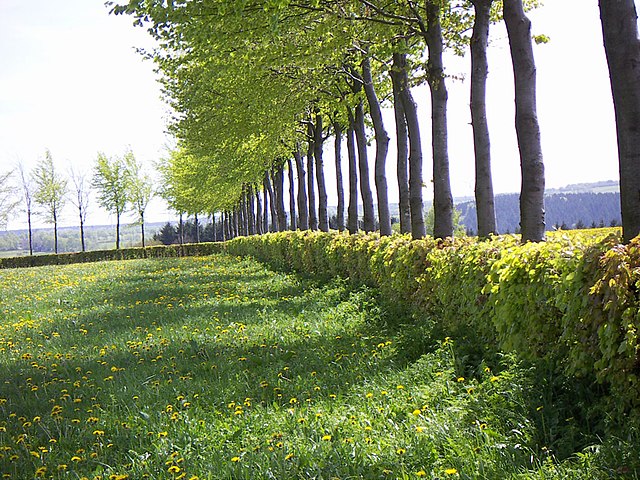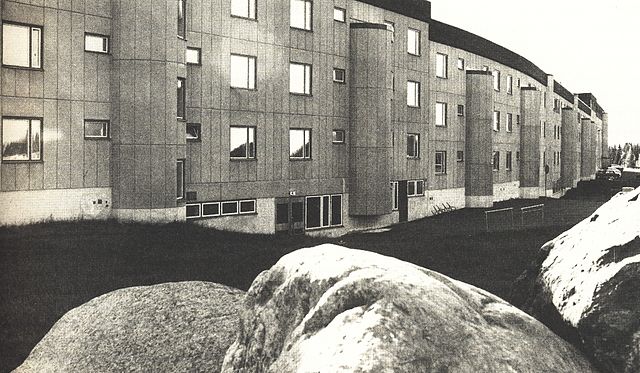A hedge or hedgerow is a line of closely spaced shrubs and sometimes trees, planted and trained to form a barrier or to mark the boundary of an area, such as between neighbouring properties. Hedges that are used to separate a road from adjoining fields or one field from another, and are of sufficient age to incorporate larger trees, are known as hedgerows. Often they serve as windbreaks to improve conditions for the adjacent crops, as in bocage country. When clipped and maintained, hedges are also a simple form of topiary.
A typical clipped European beech hedge in the Eifel, Germany.
A round hedge of Creeping groundsel.
A typical old Scottish march dyke, but without boundary trees
Hedgerows between fields in North Dakota
A windbreak (shelterbelt) is a planting usually made up of one or more rows of trees or shrubs planted in such a manner as to provide shelter from the wind and to protect soil from erosion. They are commonly planted in hedgerows around the edges of fields on farms. If designed properly, windbreaks around a home can reduce the cost of heating and cooling and save energy. Windbreaks are also planted to help keep snow from drifting onto roadways or yards. Farmers sometimes use windbreaks to keep snow drifts on farm land that will provide water when the snow melts in the spring. Other benefits include contributing to a microclimate around crops, providing habitat for wildlife, and, in some regions, providing wood if the trees are harvested.
Aerial view of field windbreaks in North Dakota
One of the original buildings at Svappavaara, designed by Ralph Erskine, which forms a long windbreak
An East German windbreak promotion poster, 1952
Windbreaks in Lesja, Norway, also used to collect snow in a dry area.







